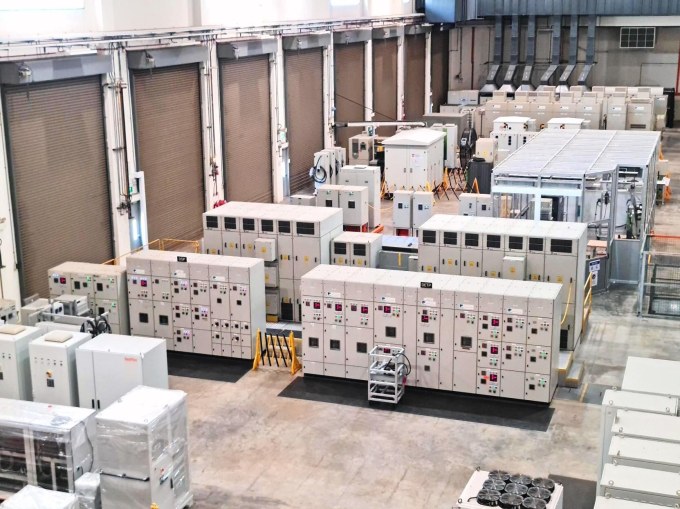The world’s electricity infrastructure is awash in transformers, the bits of equipment that change voltage as electricity courses through the grid. They’re present at nearly every point, from power plants to phone chargers. For the most part, they’ve been unchanged since they were first developed in the late 1800s.
That longevity is a testament to the original design but also to how little the grid has changed in the intervening years.
Yet with distributed renewables, batteries and electric vehicles, change is coming to the global grid faster than at any time in the last century. Electricity no longer has to flow primarily in one direction, from a handful of massive power plants to millions of end users. Instead, each of those end users could be power providers themselves, and that has made life challenging for the humble transformer.
What’s more, demand for transformers has outstripped supply, slowing the deployment of renewable power projects and increasing costs.
Enter solid-state transformers, which promise to be what the integrated circuit was to the vacuum tube. Traditional transformers are passive devices, mindlessly stepping power up or down in voltage. Solid-state versions promise to do a lot more.
For years, they’ve been little more than research projects. Amperesand is hoping to change that. The power electronics startup has raised a $12.45 million seed round to help the team commercialize the silicon-carbide solid-state transformer technology it developed in research labs at Nanyang Technological University in Singapore. The round was co-led by Xora Innovation, Temasek’s early-stage arm, and Material Impact. TDK Ventures and Foothill Ventures participated.
Sparks fly
Today’s transformers are proven, very efficient and relatively inexpensive. But they’re also massive and can’t help regulate the voltage or frequency. If either surges or dips too much, it can destabilize the grid.
As more stuff is added to the grid — from solar arrays to whole-house batteries and EV fast chargers — there’s more potential for things to go wrong. A converter on a wind turbine, which produces frequencies that rise and fall with wind speed, might output consistent power slightly differently from another model. The same could be true for battery controllers and solar inverters. “There is no uniformity, there’s a lot of randomness,” Anshuman Tripathi, co-founder and vice president of engineering, told TechCrunch. “When this happens, you need to have an active front end.” That active front end won’t just take power as it’s given, but will also help smooth the randomness.
Solid-state transformers can fill that role. But it’ll be several years before risk-averse utilities decide to use them, so Amperesand is starting by selling to EV charging companies to power their ports.

A view of Amperesand’s facility. Image Credits: Amperesand
“EV charging is a great use case,” said Phil Inagaki, managing director at Xora and Amperesand’s interim CEO. “The scale of what people are contemplating to deploy in the world with EV charging creates the largest market for transformers.”
What’s more, solid-state transformers are smaller than their predecessors and have lower cooling requirements, meaning that installations can require up to 75% less space, Inagaki said. “If you want a fast charging station in a city, you may not have a lot of room,” he said. Even outside of cities, space is a consideration. “People in the fast-charging space, I’ve been surprised, they bring it up more than I thought.”
Amperesand said it can scale its transformers to fit the needs of different locations. Unlike traditional transformers, which are monolithic pieces of equipment, solid-state transformers can be built using modules. Need more power? Simply add more modules.
Transforming how transformers are made
For a company that’s looking to sell expensive grid-tied equipment, $12.5 million won’t go far. Thankfully, the startup doesn’t anticipate that it’ll need to build much manufacturing infrastructure apart from some final assembly near where the transformers will be used. A number of semiconductor manufacturers can make the silicon-carbide devices, and there are even more suppliers that can provide printed circuit boards. Amperesand is planning to deliver the first units to the U.S. and Singapore in 2025 with full commercialization the following year.
“Old transformers are based on iron cores and oil coolants. These things are very hard to scale in manufacturing,” Inagaki said. “Nothing advances in performance and cost like semiconductor tech.”
And because solid-state transformers are fundamentally semiconductors, they’re laden with sensors that can give grid operators finer grained data that will allow them deeper insights into how the grid is performing.
Once the company proves the technology and gets customers interested, Inagaki thinks that Amperesand can quickly scale revenue. “This is not like low asking price units,” Inagaki said. “We think this is a type of company which could quickly [reach] the first $100 million in revenue. It has plenty of headroom to go to a $1 billion revenue run rate without even denting the total market in terms of infrastructure being deployed.”
If the company can crack the market, it could put the grid on the path to the “internet of power” that experts have been pining over for years. Such a grid would not just depend on crude signals from a few points, but would instead be awash in data. It can react quickly to spikes in demand, like when electric semis plug in to charge, or accommodate surges in power from neighborhoods of solar power or call on distributed batteries to stabilize the grid when clouds pass over those neighborhoods.
It’ll be years before the internet of power arrives, but solid-state transformers could become a cornerstone of it all.
techcrunch.com




